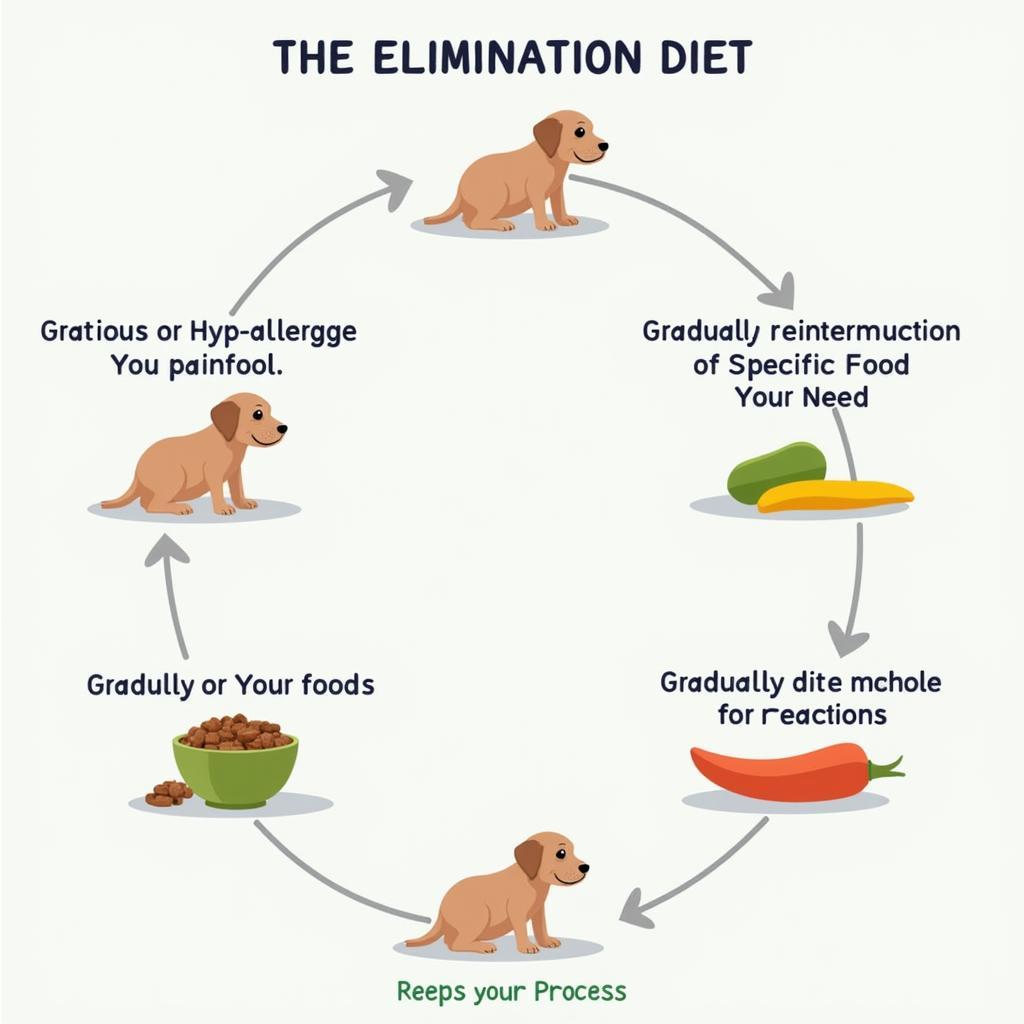Puppy rash, also known as puppy strangles, is a frustrating skin condition that can cause discomfort and distress for your furry friend. While medical treatment is crucial, managing your pup’s diet can play a significant role in alleviating symptoms and preventing future flare-ups. Understanding which foods to avoid with puppy rash can contribute significantly to your puppy’s recovery and overall well-being.
Understanding the Connection Between Diet and Puppy Rash
Puppy rash, medically termed juvenile cellulitis, often manifests as swollen lymph nodes, pustules, and hair loss, particularly on the face and ears. While the exact cause is unknown, a weakened immune system is often implicated. Certain foods can exacerbate inflammatory responses, potentially worsening puppy rash symptoms or triggering recurrences. Identifying and eliminating these dietary triggers is a crucial part of managing this condition. By understanding which foods to avoid with puppy rash, you can help your puppy feel better faster.
Common Food Allergens in Puppies
Just like humans, puppies can develop allergies to various foods. Common culprits include beef, chicken, dairy, wheat, corn, soy, and eggs. These ingredients are often found in commercial puppy foods, making it essential to scrutinize ingredient lists carefully. If you suspect a food allergy, transitioning to a limited ingredient diet or a hypoallergenic formula may be beneficial. This involves feeding your puppy a diet with novel protein sources and carbohydrates, such as venison, duck, or kangaroo, combined with sweet potato or quinoa. Always consult your veterinarian before making any significant dietary changes.
Foods to Avoid with Puppy Rash: A Detailed Guide
Here’s a closer look at some of the foods to avoid with puppy rash:
- High-Fat Foods: While essential for energy, excessive fat can worsen inflammation. Limit fatty treats and opt for lean protein sources.
- Processed Foods: These often contain artificial colors, flavors, and preservatives, which can trigger allergic reactions and exacerbate skin issues.
- Foods High in Sugar: Sugar can contribute to inflammation and suppress the immune system, potentially making your puppy more susceptible to skin infections.
Remember, every puppy is different. What triggers a reaction in one may not affect another. Careful observation and collaboration with your veterinarian are crucial to pinpoint specific dietary triggers and develop a tailored nutrition plan.
Identifying Specific Food Triggers
The best way to identify food triggers is through an elimination diet, conducted under the guidance of your veterinarian. This involves feeding your puppy a hypoallergenic diet for several weeks, then gradually reintroducing potential allergens one at a time. Observe your puppy closely for any signs of a reaction, such as itching, redness, or swelling.
 Identifying Specific Food Triggers for Puppy Rash through Elimination Diet
Identifying Specific Food Triggers for Puppy Rash through Elimination Diet
Creating a Healthy Diet for Your Puppy with Rash
While avoiding trigger foods is crucial, providing a balanced and nutritious diet is equally important to support your puppy’s overall health and immune system. A diet rich in omega-3 fatty acids can help reduce inflammation and promote healthy skin.
Incorporating Omega-3 Fatty Acids
Excellent sources of omega-3s include fish oil (specifically EPA and DHA), flaxseed oil, and chia seeds. Always consult your veterinarian for the appropriate dosage for your puppy’s size and age.
“A balanced diet is essential for managing puppy rash. Omega-3 fatty acids can be particularly beneficial in reducing inflammation and promoting skin health,” says Dr. Emily Carter, DVM, a veterinary dermatologist.
Conclusion
Managing puppy rash effectively requires a multi-faceted approach, including addressing dietary triggers. By understanding which foods to avoid with puppy rash and focusing on a balanced, nutritious diet, you can help your puppy achieve and maintain healthy, comfortable skin.
“Addressing dietary triggers is a crucial part of managing puppy rash,” adds Dr. Sarah Miller, DVM, a specialist in canine allergies. “A holistic approach, including dietary management, is essential for your puppy’s overall well-being.”
 Creating a Healthy, Balanced Diet for a Puppy with Rash
Creating a Healthy, Balanced Diet for a Puppy with Rash
FAQ
- What is puppy rash?
- What are the common symptoms of puppy rash?
- Can food allergies cause puppy rash?
- How can I identify my puppy’s food allergies?
- What should I feed my puppy with a rash?
- Are there any supplements that can help with puppy rash?
- How long does it take for puppy rash to clear up?
For further assistance, please contact us at Phone Number: 02437655121, Email: [email protected], or visit our address: 3PGH+8R9, ĐT70A, thôn Trung, Bắc Từ Liêm, Hà Nội, Việt Nam. We have a 24/7 customer support team.